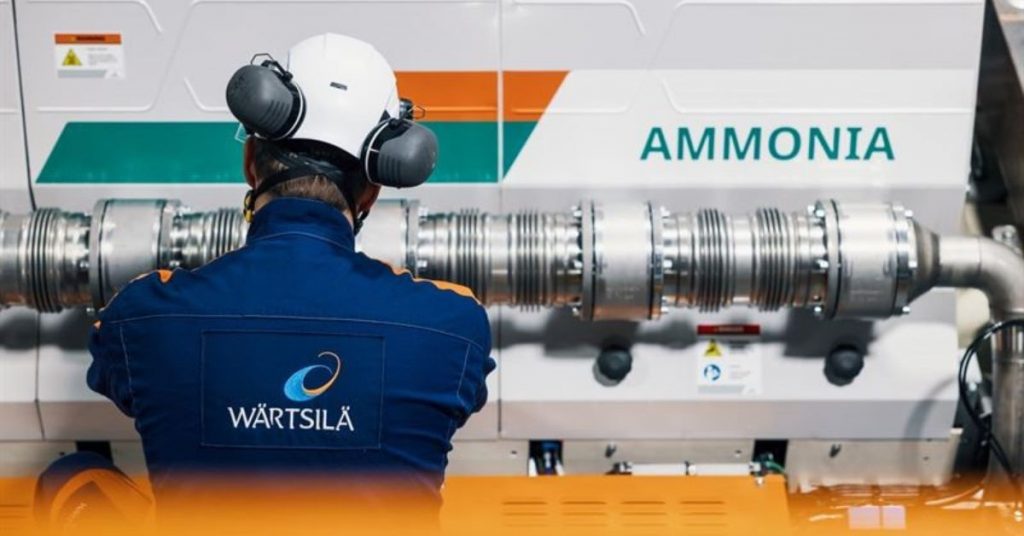Wärtsilä, a global leader in marine technology, has announced significant advancements in its 4-stroke ammonia engine solution, reporting greenhouse gas (GHG) emission reductions of up to 90% compared to conventional diesel engines. The improvements follow extensive testing conducted since the engine’s commercial debut in November 2023.
According to Wärtsilä, the ammonia-powered version of its Wärtsilä 25 engine now operates with a 95% ammonia energy share, delivering improved emissions performance based on both Well-to-Wake and Tank-to-Wake assessments. The new figures represent an 18% improvement over previous benchmarks and align with the FuelEU Maritime reference framework.
Built upon Wärtsilä’s experience with low-pressure dual-fuel engines using liquefied natural gas (LNG), the ammonia engine adopts a low-pressure Otto cycle combustion concept. The company states that this approach was selected due to its advantages in safety, efficiency, and emissions mitigation. Testing across various engine sizes demonstrated that ammonia delivers consistent thermal efficiency on par with existing LNG dual-fuel systems.
Ammonia’s chemical properties—particularly its high knock resistance and stable combustion across engine loads—further support its viability as a marine fuel, Wärtsilä said.
“As decarbonisation remains a core pillar of our strategy, we’ve focused on enhancing both the safety and performance of our ammonia solution,” said Stefan Nysjö, Vice President of Power Supply at Wärtsilä Marine. “The low-pressure Otto cycle was chosen to ensure optimal safety, efficiency, and reliability for our customers.”
The upgraded engine is part of Wärtsilä’s broader ammonia solution ecosystem, which includes the AmmoniaPac fuel gas supply system, the Wärtsilä Ammonia Release Mitigation System (WARMS), and the Wärtsilä NOx Reducer (NOR) for emissions after-treatment. The system is supported by advanced automation and maintenance services designed to ensure consistent and safe operation at sea.
Wärtsilä confirmed that the performance enhancements will be incorporated not only into future engine deliveries, expected from 2026 onward, but also into units already under contract.
Ammonia is increasingly seen as a critical fuel alternative in the maritime sector’s shift toward decarbonisation. With the International Maritime Organization (IMO) targeting net zero emissions for shipping by mid-century, Wärtsilä’s internal assessments indicate that while fuel efficiency measures can cut emissions by up to 27%, the adoption of sustainable fuels such as ammonia is essential to address the remaining 73%.
Tags: Ammonia Fuel, FutureFuels, Green Shipping, Marine technology, Maritime Innovation, sustainable Shipping, Wärtsilä



Recent Posts
Goltens Partners with Orcan Energy to Expand Marine Waste Heat Recovery Solutions
NWSA Launches First Incentive Program for Zero Emission Trucks in Washington
IHI and Vopak Partner on Ammonia Terminal Development in Japan
Chimbusco Pan Nation Completes First B30 Marine Gasoil Delivery in Hong Kong
ITOCHU Announces Newbuilding Order for Ammonia Bunkering Vessel
India Launches Incentive Scheme for Electric Trucks under PM E-DRIVE Initiative
Royal Caribbean Welcomes LNG-Fueled Star of the Seas to Its Fleet
Swire Shipping Launches ‘Voyage to Zero’ to Help Customers Cut Scope 3 Emissions Swire